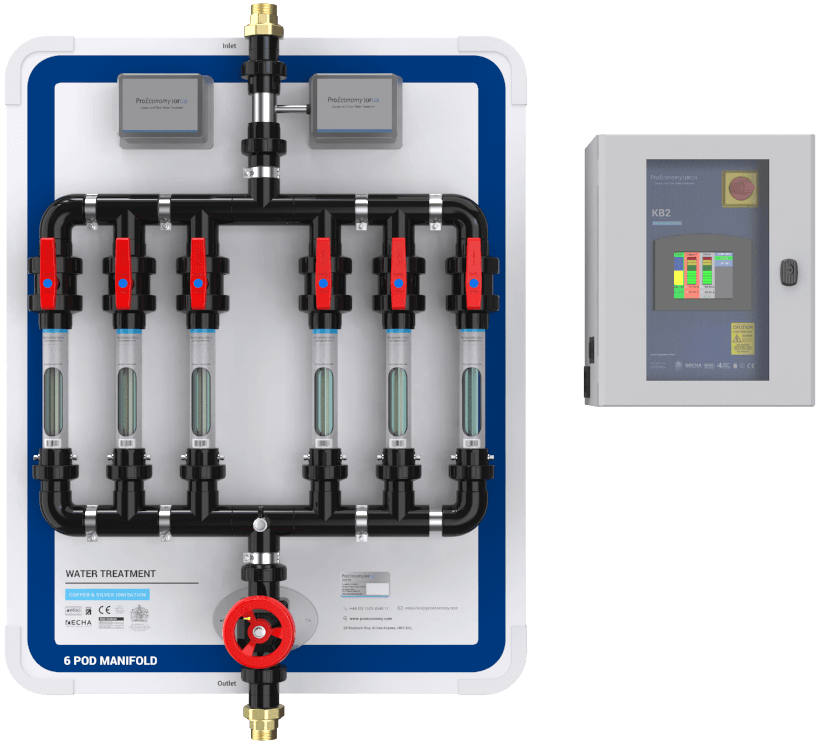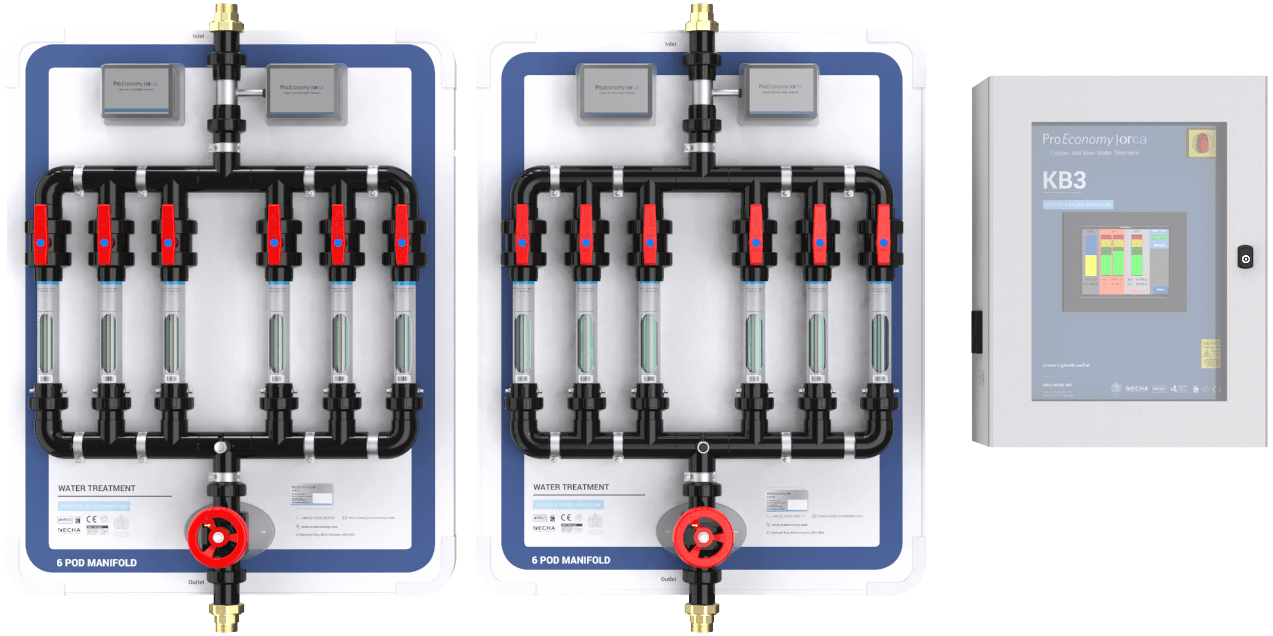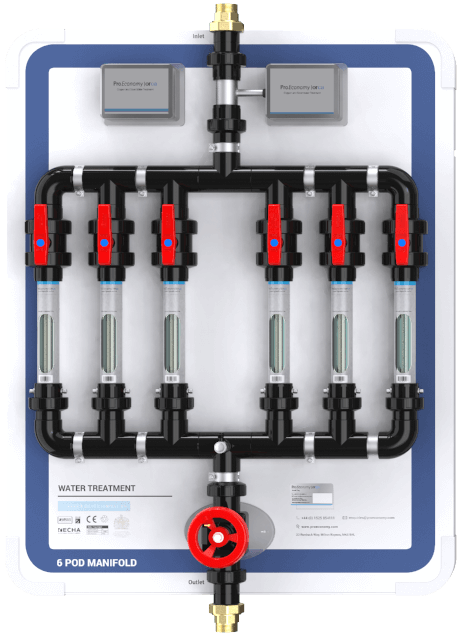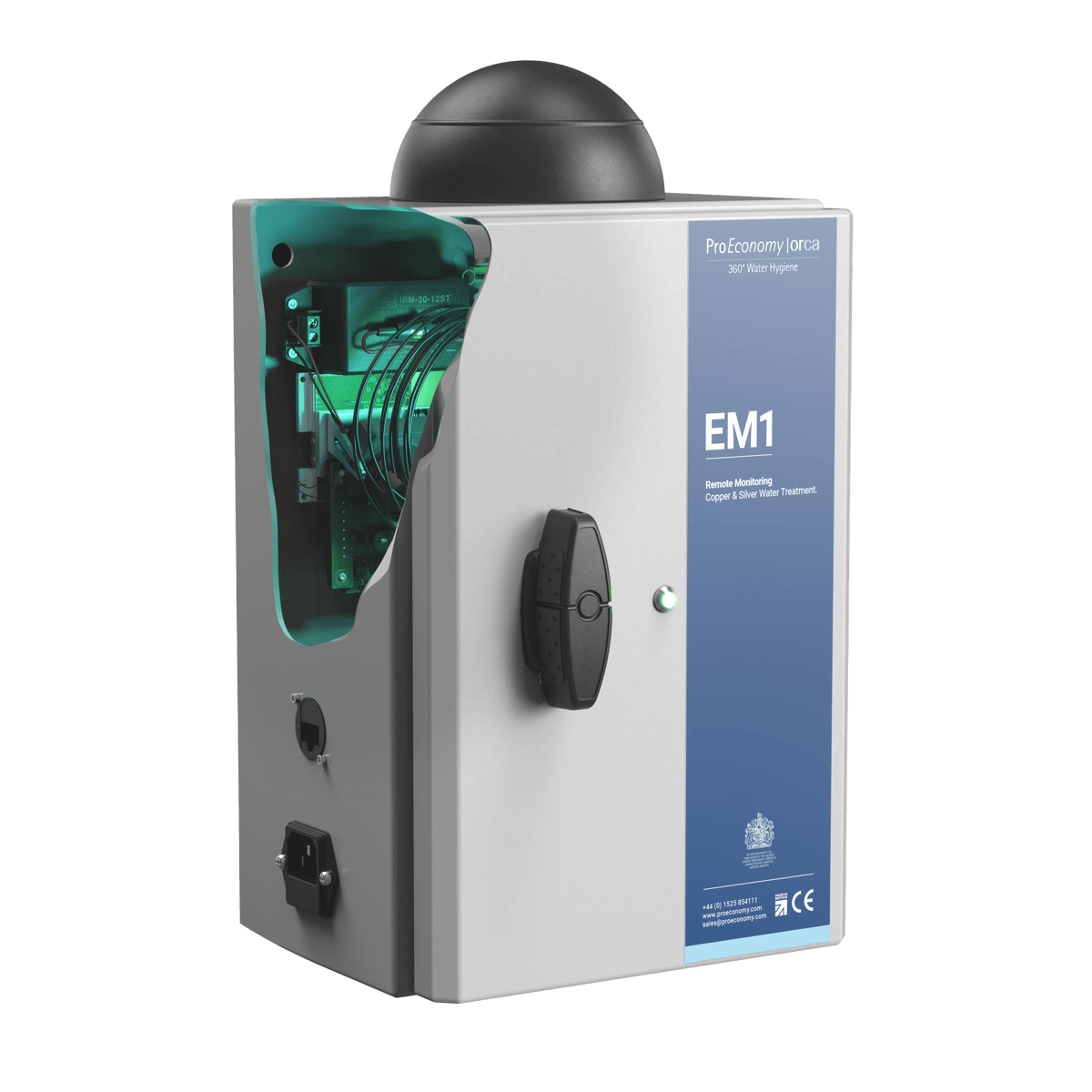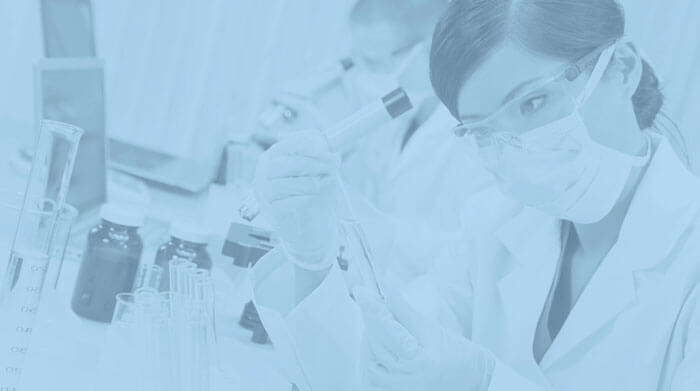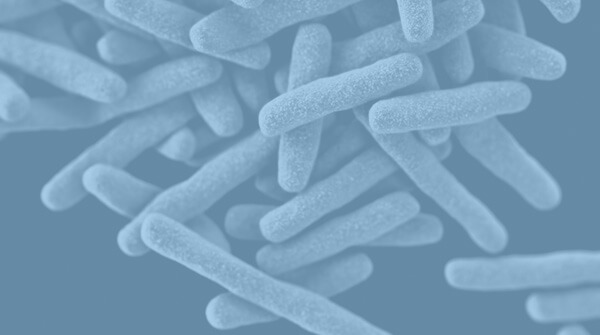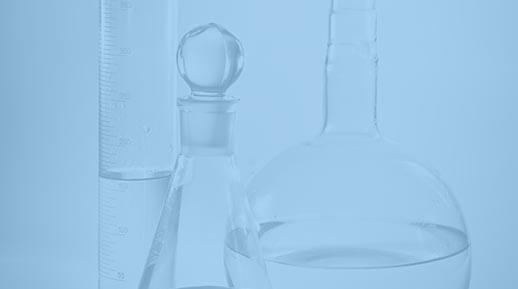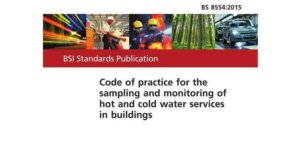Code of practice for the sampling and monitoring of hot and cold water services in buildings
The new standard BS8554:2015 (Code of practice for the sampling and monitoring of hot and cold water services in buildings) was published last month. This was a long awaited publication (by us at least). It clarifies which copper and silver neutralising agent to use when sampling water for Legionella analysis (sodium thiosulfate or EDTA). This was not clear in the now out-of-date standard BS 7592:2008. (Sampling for Legionella bacteria in water systems – code of practice).
Professor K. Clive Thompson is the Chief Scientist for ALcontrol Laboratories. They carry out all of our water analysis for Legionella, Pseudomonas, copper and silver. Here, I interview him to find out what he thinks of the new update to the British Standard.
Why does your lab use sodium thiosulfate rather than EDTA as a complexing agent for copper and silver in samples for Legionella analysis?
Prof Thompson: Based on the validation work that ALControl has previously carried out, it has been shown that 180 mg/L of sodium thiosulfate pentahydrate effectively complexes silver (as well as copper) ions and effectively minimises the antibacterial activity of both copper and silver in the samples whilst in transit to the lab. This preservative should also completely minimise the effect of all residual oxidising biocides, such as chlorine. Despite carrying out a comprehensive literature search, I have not seen any validation data for the use of 10 or 50 mg/L EDTA for neutralising silver. Also on speaking with the HPA (now the PHE), we received confirmation that no validation work on EDTA as preservative for Legionella against silver ions had been carried out.
You disagree with using EDTA at 10 mg/L as a complexation agent for silver, as previously recommended. Why do you disagree with this recommendation?
Prof Thompson: To answer this question I have to first refer to note 1 of the previous BS. This states that: “For biocides containing silver and copper, the chelating agent ethylenediaminetetraacetic acid (EDTA) can be used at concentrations of 10 mg/L. The neutralizers EDTA or sodium nitrilotriacetate (NTA) (Na3C6H6NO6) are described in BS EN ISO 19458 and can be used as a filter-sterilized solution at a final concentration of about 50 mg/L. However, they should only be added when necessary (e.g. water treated with silver or copper). Please note the inconsistency of 10 and 50 mg/L being cited and the vague ‘can be used’.
In fact, a concentration of 10 mg/L EDTA (di-sodium salt) will only complex 1.37 mg/L calcium and calcium forms a much stronger EDTA complex than silver, according to my Vogel Quantitative Analysis textbook, 1964. This gives the stability constants for Metal-EDTA complexes as follows: copper = 18.8; calcium = 10.7; magnesium = 8.7 and silver = 7.3. Most cooling tower waters are likely to contain easily 100 mg/L calcium or more. As calcium EDTA has a much higher stability constant than silver EDTA, clearly 10 mg/L EDTA is not likely to be much use for complexing silver ions in waters containing more than about 1 mg/L calcium, i.e. all cooling tower waters. Thus, there would be little if any complexing/inactivation of silver. In my opinion, the guidance of 10 mg/L of the chelating agent EDTA is totally inappropriate for silver.
What concentration of EDTA would be necessary then to complex silver in water?
I estimate that for silver one would need at least 1000 mg/L EDTA, preferably as the di-sodium salt, or even a higher concentration. The di-sodium salt is much more soluble than the free acid and gives a more neutral pH than the free EDTA. This is assuming this very high EDTA concentration does not adversely affect Legionella spp. The HPA in their standard operating procedure number F-7375/07-11 (Detection and enumeration of Legionella spp., also confirm this by stating: “Please note: the use of EDTA is yet to be fully validated”. Furthermore, it is vague about the volume of EDTA to be used (1.0 ml of 15% EDTA) and the EDTA species to be used.
Is EDTA toxic to bacteria then? And how would that affect sample analysis and results?
Prof Thompson: There is evidence (Kaur and Vadehra 1988) that EDTA enhances the biocidal effect of silver upon strains of Klebsiella pneumonia and Staphylococcus aureus. Toxicity of silver occurs mainly in the aqueous phase. Hence its use as a biocide against Legionella and Pseudomonas in water systems, and its toxicity depends on active free Ag+ ions. Accordingly, many processes and water characteristics reduce silver toxicity by complexing free Ag+. Therefore, this prevents the binding of Ag+ to the reactive surfaces of bacteria. The very stable silver thiosulfate complex has low toxicity. We can attribute this to the silver being strongly complexed by thiosulfate ions and non-reactive.
Compared with free silver ion, silver chloride complexes are about 300 times less toxic, silver sulfide is at least 15,000 less toxic and silver thiosulfate complex is more than 17,500 times less toxic. This is why ALcontrol chooses to use sodium thiosulfate as a complexing agent for the inactivation of silver, copper and chlorine in water samples for Legionella analysis.
Are you happy that the BS has left the choice of complexing agent up to laboratories carrying out analysis?
Prof Thompson: Of course! I specify that ALcontrol should continue to use 180 mg/L sodium thiosulfate pentahydrate as a complexing agent for copper, silver and chlorine. The BS could have gone as far as recommending sodium thiosulfate as an effective complexing agent for silver.
Clive Thompson is a Chartered Chemist, who together with ProEconomy questions the BS7592:2008 in 2012 because the EDTA does not effectively complex silver in the presence of calcium. Also the EDTA concentration values given in that standard were unclear. ALcontrol is currently carrying out a study with PHE comparing the effect of 50 mg/L EDTA against 180 mg/L sodium thiosulfate.
This interview was also posted on LinkedIn on 27 November 2015 – link.

